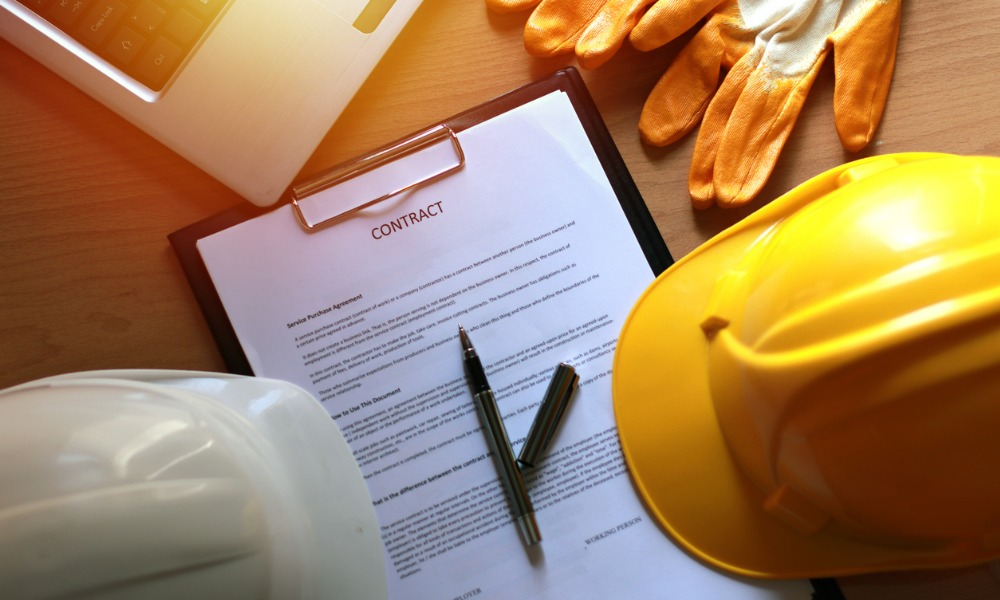Construction defects are problems on the finished building or site, which may or may not be inherently dangerous, which is discoverable during construction or after its turn-over to the owner. When construction defects arise, the common question would be – who is responsible or liable for these construction defects?
Canadian laws on construction are generally governed by common law, and provincial and territorial laws, since there is no single legislation regulating construction and the liable parties should there be problems or disputes that may arise, such as construction defects. As such, the liable or responsible party for a construction defect may be ascertained through common law principles, the specific provincial or territorial law applicable, and in relation to the law on contracts, since most construction arrangements are executed through contracts (both written and oral contracts).
Parties to the construction – the owner; the builder (contractor or subcontractor); or the real estate broker – may be liable in different ways or in different scenarios.
Types of construction defects
1: Hidden Defects
Generally, liability on hidden defects would be placed on the builder or broker when such defect has been intentionally or fraudulently concealed by them from the buyer or owner. This would entitle the buyer or owner for the costs of repair, or the court may order the builder to do the repair, plus damages in favour of the owner.
This situation would be true when the builder, especially the broker, guaranteed the said building against any defects – hidden or obvious – at the time before the sale (for a broker), or during a “construction walk-throughs" to check off the construction defects list (for a builder).
2: Dangerous Defects
Previous common law doctrine dictates that a defect may only be attributable to the builder only when the construction defect is dangerous. Thus, when it’s not dangerous to the life or limb of the owner, an action for damages or claim for repairs may be brushed aside by the court.
However, current common law doctrine now states that the defense of a non-dangerous construction defect is not sufficient to evade liability on the part of the builder, since they owe a duty of care in negligence to the buildings they contracted to. This liability may even extend to purchasers unknown to the builders after the construction. Although, this doctrine may still be overturned in subsequent cases, the latter doctrine currently stands.
3: Caveat Emptor
The doctrine of caveat emptor – which is a Latin phrase which literally means “let the buyer beware” – may be used either by the owner or the builder to pass the liability of a construction defect to the other party.
As a builder, caveat emptor would normally be their defense since the doctrine states that it is the duty of the buyer – or the owner in this case – to inspect the building for any defect once it is completed. Thus, after the turn-over of the building to the owner, especially after full payment or after any lien has been disposed of, any construction defect would now be the owner’s responsibility.
However, there are exceptions to the doctrine of caveat emptor, which may be used by an owner. When the defect on the product (or construction defect in this case) has been known to the seller (or builder) before the sale was perfected (or when the construction has finished or was turned over), this may constitute fraud or negligence on the part of the seller (or builder) which may hold them liable for such defect.
How can lawyers assist in construction defect lawsuits?
Lawyers for construction defects may represent either party in a lawsuit – either for the plaintiff (typically, the owner of the constructed building or the buyer), or for the defendant (the contractor, its subcontractor, or the real estate broker or agent).
However, it is highly recommended to consult first with construction lawyers for the appropriate law to file a case on, since each province and territory have different laws and regulations on construction and brokerage. Be sure to get one in your province, such as the best construction defect lawyers in Ontario.
Alternative Dispute Resolution (ADR)
Before proceeding with court litigation, lawyers for construction defects may proceed against the other party through any of the modes of alternative dispute resolution (ADR), such as mediation, conciliation, or arbitration. Parties may be compelled to proceed with ADR first before proceeding to litigation especially in cases when it is expressly stipulated under their construction contract.
Litigation
When court litigation is proper to settle the construction defect, lawyers for construction defects – in representing either party to the case – provides for various ways to prosecute or defend such case.
Depending on the specific provincial or territorial law, there are two common grounds for such court litigation – breach of contract, or negligence. While a breach of contract is a valid ground only when there’s an existing contract and such construction defect may be pointed out in a specific provision in the contract, negligence may be applicable both for those with a contract and even for those construction agreements with no written contracts.
In addition, each province or territory may define “construction defects” or “hidden defects” similarly or differently. For example, Ontario’s recent case law under Kingspan Insulated Panels Ltd. v. Brantford (City) defined “latent defect” regarding construction as “...a defect that cannot be discovered by inspection and ordinary vigilance”.
In British Columbia, its Homeowner Protection Act Regulation also defines “defect” differently. As such, different definitions of “construction defects” matters when pursuing a case for negligence or breach of contract. Skilled construction lawyers in British Columbia certainly have worked on this law.
Time limitations for construction lawsuits
Cases must also be filed in a timely manner to prevent the action from being barred by the statutory limitation period of the province or territory. It will usually start to run when the plaintiff (the owner or buyer) discovered the construction defect. When unprosecuted, and the specified time has already lapsed, such construction defect is already considered waived by the plaintiff.
Either party must establish their claims and defenses through convincing evidence, which may show or disprove the following, to impose liability on the other party:
- that the construction defect is present before (or after) the completion of the construction;
- that there is fraud or gross negligence on the part of the other party; or
- that the other party is estopped from claiming damages, when they were properly informed of such defect, but still accepted the sale or the completed construction project.
Need help in filing – or defending – a litigation regarding construction defects? Consult with best construction lawyers in Canada or ask your questions by commenting down below.





